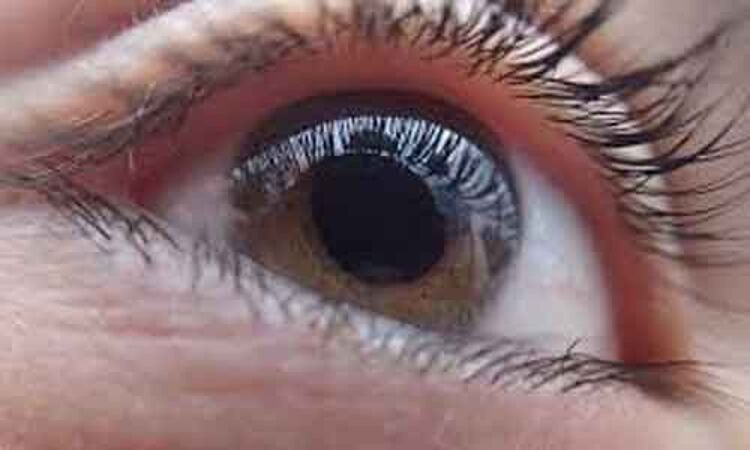- Home
- Medical news & Guidelines
- Anesthesiology
- Cardiology and CTVS
- Critical Care
- Dentistry
- Dermatology
- Diabetes and Endocrinology
- ENT
- Gastroenterology
- Medicine
- Nephrology
- Neurology
- Obstretics-Gynaecology
- Oncology
- Ophthalmology
- Orthopaedics
- Pediatrics-Neonatology
- Psychiatry
- Pulmonology
- Radiology
- Surgery
- Urology
- Laboratory Medicine
- Diet
- Nursing
- Paramedical
- Physiotherapy
- Health news
- Fact Check
- Bone Health Fact Check
- Brain Health Fact Check
- Cancer Related Fact Check
- Child Care Fact Check
- Dental and oral health fact check
- Diabetes and metabolic health fact check
- Diet and Nutrition Fact Check
- Eye and ENT Care Fact Check
- Fitness fact check
- Gut health fact check
- Heart health fact check
- Kidney health fact check
- Medical education fact check
- Men's health fact check
- Respiratory fact check
- Skin and hair care fact check
- Vaccine and Immunization fact check
- Women's health fact check
- AYUSH
- State News
- Andaman and Nicobar Islands
- Andhra Pradesh
- Arunachal Pradesh
- Assam
- Bihar
- Chandigarh
- Chattisgarh
- Dadra and Nagar Haveli
- Daman and Diu
- Delhi
- Goa
- Gujarat
- Haryana
- Himachal Pradesh
- Jammu & Kashmir
- Jharkhand
- Karnataka
- Kerala
- Ladakh
- Lakshadweep
- Madhya Pradesh
- Maharashtra
- Manipur
- Meghalaya
- Mizoram
- Nagaland
- Odisha
- Puducherry
- Punjab
- Rajasthan
- Sikkim
- Tamil Nadu
- Telangana
- Tripura
- Uttar Pradesh
- Uttrakhand
- West Bengal
- Medical Education
- Industry
Bimatoprost implant improves long term results in glaucoma treatment

USA: The bimatoprost implant has the potential to improve adherence and reduce the treatment burden in glaucoma, according to a recent study published in the journal Ophthalmology. Results from the phase III study revealed that both 10-µg and 15-µg implants are efficient in maintaining lowered intraocular pressure (IOP) for up to 12 months after the final implant placement.
Open-angle glaucoma (OAG) is a vision-threatening, chronic, irreversible disease that requires IOP lowering treatment for slowing or preventing the disease progression. As the disease advances, the economic costs of glaucoma increases and quality of life decreases due to which early management and adherence to treatment are important.
Felipe A. Medeiros, Department of Ophthalmology, Duke University, Durham, North Carolina, and colleagues conducted the study to evaluate the IOP lowering efficacy and safety of 10- and 15-μg bimatoprost implant in subjects with OAG and ocular hypertension (OHT) after initial and repeated administrations.
The randomized phase 3 clinical trial included adults with OAG or OHT in each eye, open iridocorneal angle inferiorly in the study eye by clinical gonioscopy, and study eye baseline IOP (H0; 8 am±1 h) of 22–32 mmHg after washout. Study eyes received bimatoprost implant 10 μg (n=198) or 15 μg (n=198) on Day 1 with readministration at Weeks 16 and 32, or twice-daily topical timolol maleate 0.5% (n=198). IOP was measured at Hours 0 and 2 at each visit.
Primary endpoints were IOP and change from baseline IOP through Week 12.
Key findings of the study include:
- Over the study period, the proportion of TAVR performed using CS increased from 33% to 64%, and CS was used in a median of 0% and 91% of cases in the lowest and highest quartiles of hospital CS use, respectively.
- On the basis of instrumental variable analysis, CS was associated with decreases in in-hospital mortality (adjusted risk difference: 0.2%) and 30-day mortality (adjusted risk difference: 0.5%), shorter length of hospital stay (adjusted difference: 0.8 days), and more frequent discharge to home (adjusted risk difference: 2.8%) compared with GA.
- The magnitude of benefit for most endpoints was less than in a traditional propensity score–based approach.
"Ongoing studies are evaluating other administration regimens to reduce the potential for CECD loss. The bimatoprost implant has the potential to improve adherence and reduce treatment burden in glaucoma," concluded the authors.
The study, "Phase 3, Randomized, 20-Month Study of Bimatoprost Implant in Open-Angle Glaucoma and Ocular Hypertension (ARTEMIS 1)," is published in the journal Ophthalmology.
DOI: https://doi.org/10.1016/j.ophtha.2020.06.018
Dr Kamal Kant Kohli-MBBS, DTCD- a chest specialist with more than 30 years of practice and a flair for writing clinical articles, Dr Kamal Kant Kohli joined Medical Dialogues as a Chief Editor of Medical News. Besides writing articles, as an editor, he proofreads and verifies all the medical content published on Medical Dialogues including those coming from journals, studies,medical conferences,guidelines etc. Email: drkohli@medicaldialogues.in. Contact no. 011-43720751


